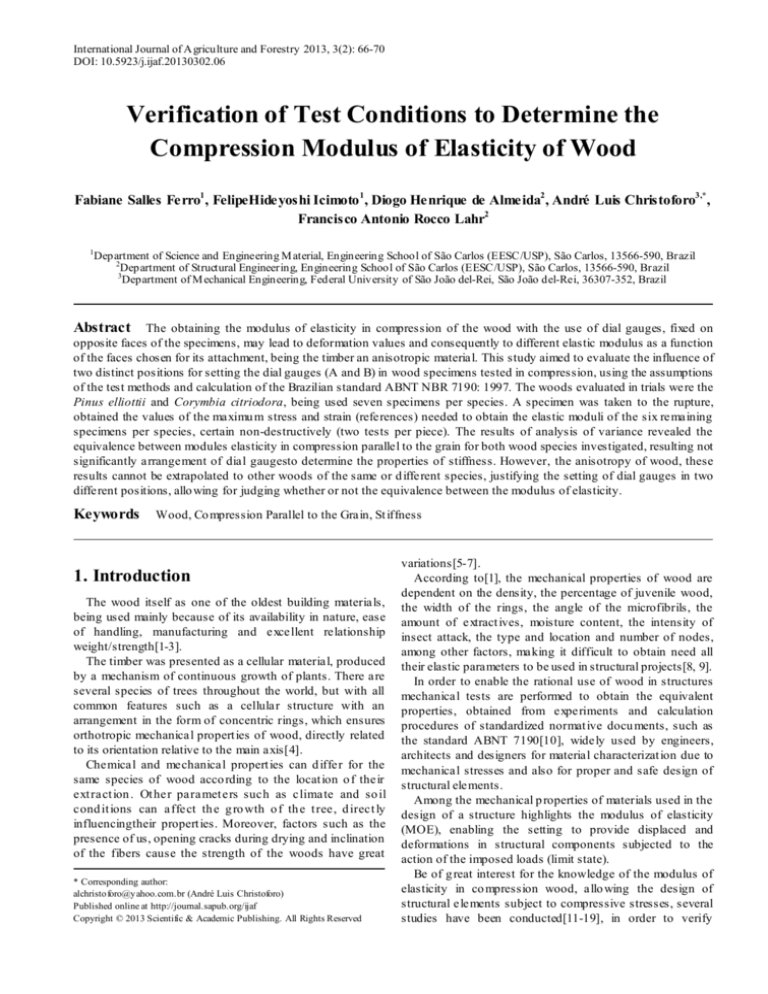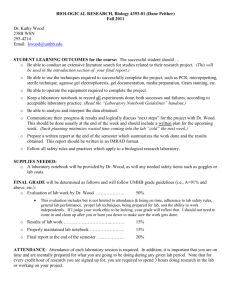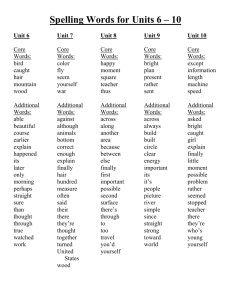
International Journal of A griculture and Forestry 2013, 3(2): 66-70
DOI: 10.5923/j.ijaf.20130302.06
Verification of Test Conditions to Determine the
Compression Modulus of Elasticity of Wood
Fabiane Salles Ferro1 , FelipeHideyoshi Icimoto 1 , Diogo Henrique de Almeida2 , André Luis Christoforo3,* ,
Francisco Antonio Rocco Lahr2
1
Department of Science and Engineering M aterial, Engineering School of São Carlos (EESC/USP), São Carlos, 13566-590, Brazil
2
Department of Structural Engineering, Engineering School of São Carlos (EESC/USP), São Carlos, 13566-590, Brazil
3
Department of M echanical Engineering, Federal University of São João del-Rei, São João del-Rei, 36307-352, Brazil
Abstract The obtaining the modulus of elasticity in compression of the wood with the use of dial gauges, fixed on
opposite faces of the specimens, may lead to deformation values and consequently to different elastic modulus as a function
of the faces chosen for its attachment, being the timber an anisotropic material. This study aimed to evaluate the influence of
two distinct positions for setting the dial gauges (A and B) in wood specimens tested in compression, using the assumptions
of the test methods and calculation of the Brazilian standard ABNT NBR 7190: 1997. The woods evaluated in trials were the
Pinus elliottii and Corymbia citriodora, being used seven specimens per species. A specimen was taken to the rupture,
obtained the values of the maximu m stress and strain (references) needed to obtain the elastic moduli of the six remaining
specimens per species, certain non-destructively (two tests per piece). The results of analysis of variance revealed the
equivalence between modules elasticity in compression parallel to the grain for both wood species investigated, resulting not
significantly arrangement of dial gaugesto determine the properties of stiffness. However, the anisotropy of wood, these
results cannot be extrapolated to other woods of the same or d ifferent species, justifying the setting of dial gauges in two
different positions, allo wing for judging whether or not the equivalence between the modulus of elasticity.
Keywords
Wood, Co mpression Parallel to the Grain, St iffness
1. Introduction
The wood itself as one of the oldest building materials,
being used mainly because of its availability in nature, ease
of handling, manufacturing and excellent relationship
weight/strength[1-3].
The timber was presented as a cellular material, produced
by a mechanism of continuous growth of plants. There are
several species of trees throughout the world, but with all
common features such as a cellular structure with an
arrangement in the form of concentric rings, which ensures
orthotropic mechanical propert ies of wood, directly related
to its orientation relative to the main axis[4].
Chemical and mechanical propert ies can d iffer for the
same species of wood acco rding to the locat ion o f their
ext ract ion . Ot her paramet ers such as climate and so il
cond it ions can affect th e g ro wth o f th e t ree, d irect ly
influencingtheir propert ies. Moreover, factors such as the
presence of us, opening cracks during drying and inclination
of the fibers cause the strength of the woods have great
* Corresponding author:
alchristoforo@yahoo.com.br (André Luis Christoforo)
Published online at http://journal.sapub.org/ijaf
Copyright © 2013 Scientific & Academic Publishing. All Rights Reserved
variations[5-7].
According to[1], the mechanical properties of wood are
dependent on the density, the percentage of juvenile wood,
the width of the rings, the angle of the microfibrils, the
amount of extract ives, moisture content, the intensity of
insect attack, the type and location and number of nodes,
among other factors, making it difficult to obtain need all
their elastic parameters to be used in structural projects[8, 9].
In order to enable the rational use of wood in structures
mechanical tests are performed to obtain the equivalent
properties, obtained from experiments and calculation
procedures of standardized normat ive docu ments, such as
the standard ABNT 7190[10], widely used by engineers,
architects and designers for material characterizat ion due to
mechanical stresses and also for proper and safe design of
structural elements.
Among the mechanical p roperties of materials used in the
design of a structure highlights the modulus of elasticity
(MOE), enabling the setting to provide displaced and
deformations in structural components subjected to the
action of the imposed loads (limit state).
Be of g reat interest for the knowledge of the modulus of
elasticity in co mpression wood, allo wing the design of
structural elements subject to compressive stresses, several
studies have been conducted[11-19], in order to verify
International Journal of A griculture and Forestry 2013, 3(2): 66-70
experimentally and numerically the influence of co mposition
anatomical tissue timber (anisotropy) in physical, chemical
and mechanical properties, as well as to characterize wood
species not yet known.
This study aimed to investigate the influence of
positioning of dial gauges (positions A and B) to determine
the modulus of elasticity of wood in co mpression parallel to
the grain, enabling determine possible differences between
then.
67
3. Results
Tables 1 and 2 present the descriptive statistics related to
the modulus of elasticity (MOE-A,-B MOE) in co mpression
parallel to the grain o fCorymbia citriodora and Pinus
elliottiiwood respectively, obtained with the use of dial
gauges positioned on the faces A and B (Figure 1), X m is the
arith metic mean, SD the standard deviation and CV the
variation coefficient of specimens.
Table 1. Modulus of elasticity of Corymbia citriodora wood
2. Materials and Methods
Specimen MO E-A (MPa)
The wood species used in this study were the Corymbia
citriodora (Strength class C40) and Pinus elliottii (Strength
class C30), made seven specimens per type of timber to
perform in co mpression test[10], extracted fro m different
parts of a batch considered homogeneous, with mo isture
content near 12%, as established by the Brazilian
standard[10].
The specimens were manufactured with square cross
section of 5.0cm and 15cm of length[10], and are free of
defects. The dimensions of the sides of the specimens were
performed with a caliper accurate to 0.1 mm.
The dial gaugeswere fixed in two different positions, A
and B, as illustrated in Figure 1, t wo bending tests were
performed in the same specimen perwood species. Of each
species, one of seven specimens was taken to rupture,
allo wing discover tensions (σ) and strain (ε) for the 10% and
50% of the maximu m stresses and strains, used to determine
the modulus of elasticity (Equation 1) in the other specimens,
as required by the Brazilian standard[10].
Ec ,0
σ − σ 10%
= 50%
ε 50% − ε10%
MO E-B (MPa)
1
15545
17458
2
21736
11960
3
16764
16641
4
24706
19352
5
17310
18189
6
17629
15470
Xm
18948
16512
DP
3512,9
2592,1
CV (%)
19
16
Table 2. Modulus of elasticity of Pinus elliottii wood
(1)
Specimen
MO E-A (MPa)
MO E-B (MPa)
1
8697
7913
2
10062
10409
3
12963
10985
4
9119
11038
5
13634
14636
6
10343
8683
Xm
10803
10611
DP
2035,3
2347,8
CV (%)
20
22
Figure 2 shows the normality graphs of the modulus of
elasticity ofCorymbia citriodora and Pinus elliottiiwood
respectively.
Percent
99
Figure 1. Specimen timber with Corymbia citriodora setting the dial
indicators: Positions A and B
To check the statistical equivalence between the modulus
of elasticity for the two species of wood was used analysis of
variance (A NOVA), performed as an aid software Min itab ®
version 14.
Mean
18948
StDev
3513
N
6
AD
0,459
P-Value 0,161
95
90
80
70
60
50
40
30
20
10
5
1
0 0 0 0 0 0 0 0 0 0
00 200 400 600 800 000 200 400 600 800
0
1 1 1 1 1 2 2 2 2 2
MOE-A (MPa) - Corymbia citriodora
(a)
Fabiane Salles Ferro et al.: Verification of Test Conditions to Determine the
Compression M odulus of Elasticity of Wood
99
Mean
16512
StDev
2592
N
6
AD
0,279
P-Value 0,513
Percent
95
90
80
70
60
50
40
30
20
10
5
1
0
0
0
0
0
0
0
0
00 00 00 00 00 00 00 00
10 12 14 16 18 20 22 24
Figure 3 shows the main effect plots of the MOE for the
wood species evaluated.
19000
Mean of MOE (MPa)
68
18500
18000
17500
17000
16500
MOE-B (MPa) - Corymbia citriodora
A
(b)
Face (A and B)
B
Percent
99
95
90
80
70
60
50
40
30
20
10
5
Mean
10803
StDev
2035
N
6
AD
0,379
P-Value 0,276
1
5000
7500
10000
12500
Mean of MOE (MPa)
(a)
15000
10800
10750
10700
10650
10600
MOE-A (MPa) - Pinus elliottii
(c)
B
(b)
Mean
10611
StDev
2348
N
6
AD
0,322
P-Value 0,398
95
90
80
70
60
50
40
30
20
10
5
5000
7500 10000 12500 15000 17500
MOE-B (MPa) - Pinus elliottii
(d)
Figure 2. Graphs of normality for the modulus of elasticity of the woods
investigated
The P-values of normality tests of Anderson-Darling
(Figure 2) on the modulus of elasticity for the Corymbia
citriodora (0.161) and Pinus elliottii (0.513) woods were
both higher than 0.05, p roving to be normal the data
distribution[21].
Table 3 shows the results of the ANOVA factor, position
of the dial gauge to obtain the modulus of elasticity (MOE-A;
EOM B).
Table 3. P-values from the ANOVA on the MOE of the wood investigated
Corymbia citriodora
Pinus elliottii
P-valor
0,202
0,882
R2 (Adj.)
7,32%
0,00%
P-values obtained by ANOVA o f M OE for both wood
species were greater than 0.05[21], notes the equivalence
between the values, there was no significant the position of
the dial gaugesto determine the stiffness properties of wood
evaluated.
To validate the results of the ANOVA, it is necessary to
ensure normality, independence and homogeneity of the
residualsfor the MOE of both wood species. Figures 4 and 5
shows the results concerning the normality of the residuals
for the rig idity of both wood species, and independence and
uniformity shown in Figures 6 and 7.
99
Percent
Percent
Face (A and B)
Figure 3. Main effects plot of the MOE for the Corymbia citriodora (a)
and Pinus elliottii (b) wood species
99
1
A
-1,81899E-12
Mean
StDev
2943
N
12
0,160
AD
P-Value
0,929
95
90
80
70
60
50
40
30
20
10
5
1
0 0 0 0
00 00 00 00
-8 -6 -4 -2
0 00 00 00 00
20 40 60 80
Residual for MOE (Corymbia citriodora)
Figure 4. Normality plot of residuals of ANOVA on MOE for the
Corymbia citriodora species
International Journal of A griculture and Forestry 2013, 3(2): 66-70
95
90
80
70
60
50
40
30
20
10
5
3000
1000
0
-1000
10600
0
2500
10700
10750
Fitted Value
10800
(b)
Residuals Versus the Order of the Data
MOE
5000
Figure 7. Independence (a) homogeneous and (b) residuals of ANOVA on
the MOE of Pinus elliottii wood species
The results shown by the graphs of Figures 2-7 validate
the ANOVA model, proving they are the equivalent the
compression modulus of elasticity of the wood investigated.
4. Conclusions
2500
0
-2500
-5000
10650
5000
Figure 5. Normality plot of residuals of ANOVA on MOE for the Pinus
elliottii wood species
1
2
3
4
5
6
7
8
9 10 11 12
Observation Order
(a)
Residuals Versus the Fitted Values
MOE (MPA)
5000
By the results of the analysis of variance was verified
statistical equivalence between the modulus of elasticity of
both wood species, revealing, for the specimens tested, not
significant position of dial gauges in the calculation of the
modulus of elasticity. As the wood an anisotropic material
(orthotropic), the results obtained in this study cannot be
extrapolated to the same wood species or different species,
imply ing the use of d ial gauges in two different positions in
the specimen, enabling assess equivalence or not of the
elastic moduli obtained.
2500
0
REFERENCES
-2500
-5000
16500
17000
17500
18000
Fitted Value
18500
[1]
Calil, C. Jr.; Lahr, F. A. R.; Dias, A. A. Dimensionamento de
elementos estruturais de madeira. Barueri – SP: M anole Ltda,
ISBN: 85-204-1515-6, 2003.
[2]
Zangiácomo, A. L. Estudo de elementos estruturais roliços de
madeira. Tese (Doutorado). Engenharia Civil, Departamento
de Engenharia de Estruturas. Escola de Engenharia de São
Carlos doa Universidade de São Carlos (EEESC/USP). São
Carlos (SP), 2007.
[3]
Christoforo, A. L.; Rocco, F. A. L.; M orales, E. A. M .;
Zangiácomo, A. L.; Panzera, T. H. Influence of
Displacements on Calculus of the Longitudinal M odulus of
Elasticity of Pinus Caribaea Structural Round Timber Beams.
International Journal of Agriculture and Forestry, v. 2, p.
157-160, 2012.
[4]
Balseiro, A.; Negrão, J.; Faria, J. A. Reforço de vigas de
madeira com laminados de carbono pré-esforçados.
Construlink.com - Tecnologias de Informação, S.A., n. 16, v.
6., p. 14-24, ISSN 1645-5576, Lisboa (PT), 2008.
[5]
Christoforo, A. L. Influência das irregularidades da forma em
peças de madeira na determinação do módulo de elasticidade
longitudinal. Tese de Doutorado. Escola de Engenharia de
19000
(b)
Figure 6. Independence (a) homogeneous and (b) residuals of ANOVA on
the MOE of wood Corymbia citriodora wood species
MOE
4000
3000
Residual
2000
-3000
Residual for MOE (Pinus elliottii)
Residual
4000
-2000
1
-5000 -2500
Residual
Residuals Versus the Fitted Values
MOE (MPa)
Mean
-6,06330E-13
StDev
2095
N
12
AD
0,324
P-Value
0,474
Residual
Percent
99
69
2000
1000
0
-1000
-2000
-3000
1
2
3
4
5
6
7
8
9
Observation Order
(a)
10
11
12
70
Fabiane Salles Ferro et al.: Verification of Test Conditions to Determine the
Compression M odulus of Elasticity of Wood
São Carlos da Universidade de São Paulo EESC/USP, São
Carlos (SP), 2007.
[13] Gong, M .; Smith, I. Failure of softwood under static
compression parallel to grain. Journal of the Institute of Wood
Science, v 15, n 4, p. 204-210, 2000.
[6]
Christoforo, A. L.; Panzera, T. H.; Batista, F. B.; Borges, P.
H.; Rocco, F. A. L.; Franco, C. F. The position effect of
structural Eucalyptus round timber on the flexural modulus of
elasticity. Revista Engenharia A grícola, v. 31, p. 1219-1225,
2011.
[7]
Rocco Lahr, F. A. R. Sobre a determinação de propriedades
de elasticidade da madeira. 216p. Tese de Doutorado. Escola
de Engenharia de São Carlos, Universidade de São Paulo, São
Carlos - SP, 1983.
[15] Xavier J, Avril S, Pierron F, M orais J. Novel experimental
approach for longitudinal-radial stiffness characterisation of
clear wood by a single test. Holzforschung; v.61, p. 573–81,
2007.
[8]
Christoforo, A. L.; Romanholo, G. A.; Panzera, T. H.; Borges,
P. H.; Rocco, F. A. L. Influence of stiffness in bolted
connections in wooden plane structure of truss type. Revista
Engenharia Agrícola, v. 31, p. 998-1006, 2011.
[16] Benabou, L. Kink band formation in wood species under
compressive loading. Society for Experimental M echanics,
Inc., v. 65, p. 647-656, 2008.
[9]
Christoforo, A. L.; Rocco, F. A. L.; M orales, E. A. M .;
Zangiácomo, A. L.; Panzera, T. H. Influence of
Displacements on Calculus of the Longitudinal M odulus of
Elasticity of Pinus Caribaea Structural Round Timber Beams.
International Journal of Agriculture and Forestry, v. 2, p.
157-160, 2012.
[10] Associação Brasileira de Normas Técnicas (ABNT):
NBR7190. Projeto de estruturas de madeira. Rio de Janeiro,
1997.
[11] Rocco Lahr, F. A., Robles, D. G. Characterization of
alternative species of wood for employment in civil
construction. In: Proceedings of the 2th International
Symposium on Natural Polymers and Composites; Atibaia
(Brasil), p.115-120, 1998.
[12] Rocco Lahr, F. A.; Dias A. A. M aderas tropicales brasileñas
alternativas. M adera: Ciencia y Tecnologia, v.1, p. 7-14,
1999.
[14] Gindl, W. Comparing mechanical properties of normal and
compression wood in Norway spruce: The role of lignin in
compression parallel to the grain Holzforschung, v. 56, n. 4, p.
395-401, 2002.
[17] Gryc, V.; Vavrcík, H. Variability of spruce (Picea abies[L.]
Karst.) compression strength with present reaction wood.
Journal of Forest Science, v. 55, n. 9, p. 415-422, 2009.
[18] Silva, D. A. L. Rocco Lahr, F. A.; De Faria, O. B.; Chahud, E.
Influence of wood moisture content on the modulus of
elasticity in compression parallel to the grain M aterials
Research, v. 15, n. 2, p. 300-304, 2012.
[19] Xavier, J; Jesus, A. M . P.; M orais, J. J. L.; Pinto; J. M . T.
Stereovision measurements on evaluating the modulus of
elasticity of wood by compression tests parallel to the grain.
Construction and Building M aterials, v. 26, p. 207-215, 2012.
[20] Ferro, F. S.; Icimoto, F. H.; Almeida, D. H.; Rocco Lahr, F. A.
Influência das condições de ensaio nos valores do módulo de
elasticidade da madeira na compressão paralela às fibras. In:
XX Congresso Brasileiro de Engenharia e Ciência dos
M ateriais, 2012, Joinville, SC. Anais do XX CBECIM AT,
2012. v. único. p.5354-5361.
[21] M ontgomery, D. C. Design and analysis of experiments. John
Wiley & Sons Inc., 6a edition, Arizona, 2005.







